
Two papers from the Soft, Biological and Statistical Physics group appeared in the 22nd April edition of Physical Review Letters.
Both papers relate to nonequilibrium statistical physics, which is a central research theme of the group. In essence, this concerns fundamental theories for forms of condensed matter that exhibit a current or flow of some kind. Although these systems are ubiquitous in nature, theories are still in their infancy. Both papers reveal surprising new information.
In the first - "Diffusion with Stochastic Resetting" by M. R. Evans and S. N. Majumdar, Phys. Rev. Lett. 106 160601 - the fundamental process of diffusion was re-examined when the diffusing particles returned at random times to the initial position. One way to visualise this is to imagine the process of looking for a lost item in a room by taking steps in a random direction, periodically returning to the starting position to begin the search anew. Evans and Majumdar found that this strategy of going back to the beginning can in fact drastically improve the time to locate the object.
The second paper - "Noise-induced dynamical transition in systems with symmetric absorbing states" by D. I. Russell and R. A. Blythe, Phys. Rev. Lett. 106 165702 - shows that the way in which regions of magnetic alignment grow in time depends on the scale of local fluctuations. The model discussed in this paper can also be used to describe the spread of behaviour (like language or fashions) in a human population. In this model, fluctuations increase with the willingness to forget one's existing behaviour, showing that behaviours might spread in a fundamentally different way in populations of culturally forgetful individuals than in those who have a long cultural memory.

'SOUND in a man-made environment' is a project that considers the effects of background noise produced by technology. The 'Sound' exhibition has been shown in leading exhibition centres around the world and has featured on both radio and television. It is now supported by a dedicated website where visitors can read about the scientific and environmental aspects of noise, see images from the exhibition and play clips from its soundscapes. You are also invited to contribute your own comments to the site.
The public engagement project 'SOUND in a man-made environment' is funded at the School of Physics and Astronomy by the Engineering and Physical Sciences Research Council in partnership with the National Physical Laboratory.
Image gallery

If you are interested in applying for the MSc in High Performance Computing at the School of Physics & Astronomy, the Open Days are a good opportunity to:
• Talk to staff from the MSc in HPC
• Discuss career opportunities and financial support
• Meet current students.
Upcoming MSc in HPC Virtual Open Days
Thursday 28th April, 12:00-13:00 BST
Thursday 5th May, 13:00-14:00 BST
Live sessions in the chat rooms and virtual space will allow you to talk to staff and current students about applying for the MSc, studying in the University, living in Edinburgh and any other aspect of studying with us.
Registration
To book your place, please send an email with your name and the session you would like to attend to msc [at] epcc.ed.ac.uk (subject: MSc%20in%20HPC%20Virtual%20Open%20Day)
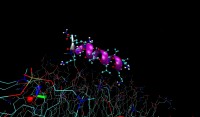
The School's Institute for Condensed Matter & Complex Systems and Oxford University have received £477,000 from EPSRC to study the molecular structure and function of novel protein fragments (peptides) designed to have potent anti-microbial activity. The work is an international collaboration and involes the UK's National Physical Laboratory (NPL) as an industrial co-funder and IBM Research in New York. Jason Crain will be the Edinburgh project leader.
The project seeks to understand how short protein fragments are effective in combating infection from bacteria and viruses and to reveal the molecular mechanisms by which they function. The aim is to design new and more effective molecules in collaboration with industrial partners.
The project combines synthesis of new materials with state-of-the-art experiment and computer simulations implemented on the Blue Gene supercomputers at IBM's Watson Research Labs and on facilities at EPCC. A particular aim is to understand the interactions of antimicrobial peptides with cellular membranes.
The work is relevant to the issue of antimicrobial resistance, which is recognised as a growing global concern with wide-ranging ramifications to the extent that the problem has been selected by the WHO as the theme for World Health Day 2011.
The project is part of a major collaboration between the partners funded by NPL and SUPA. Edinburgh's work, which spans both the experimental and computational aspects, is part of its growing research activities in biophysics with applications in healthcare.
Image gallery

'Hunting the Higgs Boson' is the theme of the Particle Physics For Scottish Schools (PP4SS) exhibition at this year's Edinburgh International Science Festival. Honorary Fellow and PP4SS director Alan Walker will represent the School at the event in the Discover Science Zone in the National Museum of Scotland.
PP4SS aims to support physics teachers by introducing particle physics to school pupils, encouraging them to become engaged with the subject.
'Hunting the Higgs Boson' runs from 13-22 April at 10am-5pm each day.
Image gallery
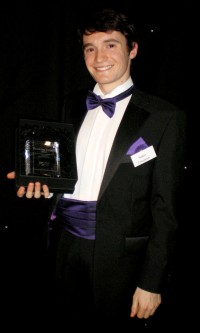
Physics wins for innovative teaching and best postgraduate tutor.
Two members of the Physics teaching team have been recognised in the 2011 EUSA Teaching Awards. The Vitae Award for Best Postgraduate Who Tutors went to Robert Concannon. Two other Physics postgraduates - Adam Apostoli and Kate Slaughter - were also nominated. For Adam, this was the third time in a row.
Simon Bates - who was a runner-up in the two previous years - picked up the Teach First Innovative Teaching Award.
This is the third year that EUSA has made the awards. A record 5,168 student nominations were received for 777 teachers, with 11 awards presented to outstanding members of University staff and postgraduate tutors.
Here are just a few of the comments left by students making nominations.
Simon Bates: award for Innovative Teaching
"Professor Bates puts a lot of energy into his lectures and interacts with the students extremely well... His use of clicker questions keeps his lectures interesting and fun, and allows the students to engage with the lecture content... One of the main aspects of why I think Simon was a good teacher is the fact that every week he would take the time to make screencasts for webCT. These would range from overall advice with studies to specific problems with the subject. This became very helpful as it was able to cover a lot of problems that couldn't be answered in lectures... This interaction outside lectures shows students that Professor Bates has a genuine interest in us all doing well in this course."
Robert Concannon: Best Postgraduate Who Tutors
"He has most definitely given me a deeper understanding of the course material... Rob has always been enthusiastic and incredibly encouraging even when I have been despairing that I would never understand and be able to get through the course material and problems set... He makes maths funny and the tutorials so much more enjoyable. He also readily gave up more of his time if you needed more help... He is brilliant at spotting where you are struggling with a question and diligently makes sure you actually understand everything... I honestly feel that without all his support, patience and determination I would not have managed to pass the course... I was so lucky to have him as a tutor."
Image gallery
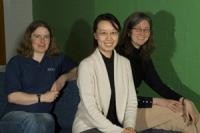
The MSc in HPC Virtual Open Days are live, online interactive sessions where you will meet course staff in chat rooms and virtual spaces. You do not need to attend the University campus, as these events are hosted online.
The next MSc in HPC Virtual Open Days are on:
- Monday 28 March 14:00–15:00 BST
- Wednesday 6 April 11:00–12:00 BST
To book your place, please email your name and the session you would like to attend to: msc [at] epcc.ed.ac.uk.
Image gallery

Dr Chamkaur Ghag, a postdoctoral research assistant in the School's Nuclear Physics Group, has been invited to give the Cleveland Institution of Engineers' public lecture in March. Dr Ghag will discuss 'The Search for Dark Matter at Boulby Mine'.
The Cleveland Institution of Engineers was founded in 1864 by a small group of engineering pioneers from the local steel and railway industries. It is the oldest institution of its kind in the world.
The talk will take place on Tuesday 15th March at 5:30pm in the Stephenson Building, Teesside University. See the Cleveland Institution of Engineers' website for more information.
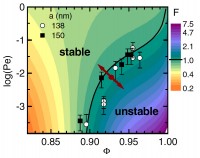
ICMCS researchers ended 2010 with a bang with two papers in Physical Review Letters' last issue of 2010 (week ending 31st December):
- Bartłomiej Waclaw, Rosalind Allen and Martin Evan’s theoretical study of the effect of migration on biological evolution (article number 268101),
- Rut Besseling, Lucio Isa (now in Zürich), Mike Cates and Wilson Poon’s combined experimental and theoretical study of the origins of inhomogeneous shearing (or ‘shear banding’) in concentrated colloidal suspensions (article number 268301) with collaborators in Crete.
This was followed in the first issue of 2011 (week ending 7th January) by a paper from Laurence Wilson (now in Harvard), Vincent Martinez, Jana Schwarz-Linek, Jullien Tailleur, Peter Pusey and Wilson Poon with an Australian sabbatical visitor announcing a new method for the high throughput characterization of the motility of E. coli, yielding the swimming speed distribution and information about the non-motile population in a matter of minutes (article number 018301).
ICMCS is clearly in the process of turning PRL into their house journal: Davide Marenduzzo and Mike Cates have another paper on liquid crystal blue phases in the press: watch this space!
Image gallery
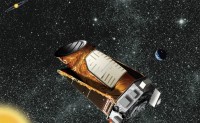
Astronomers from the University of Edinburgh are joining their counterparts in Queen’s University Belfast, Geneva, Harvard, St Andrews and INAF-TNG in the hunt for extra-solar planets similar to the Earth. Together they will build and use a new instrument called HARPS-N for the Italian 3.5-metre Telescopio Nazionale Galileo in the Canary Islands. The instrument will be able to analyse the light of candidates identified from NASA’s Kepler space probe.
Since its launch in March 2009, Kepler has been continually taking images of a single area of sky in the constellation of Cygnus. Of the hundreds of thousands of stars visible in these images, around 1200 show indications of having planetary systems.
Kepler looks for tiny tell-tale dimmings in the light of stars that occur when orbiting planets pass in front of them. However, to be able to understand what kind of worlds these planets are, the light has to be subjected to more detailed examination with the HARPS-N instrument.
HARPS-N will not directly "see" planets. The Kepler planets are far too faint to be seen with any telescope. Instead HARPS looks at their stars and measures the tiny effect the accompanying planets have on their motion. The less massive the planet, the tinier the effect it produces on the star, and the more precise the instrument needed to detect it.
HARPS is able to detect movements at velocities of just a metre per second — the speed of a person walking — in a star hundreds of light-years away. This has allowed planets only a few times more massive than the Earth to be discovered.
The HARPS-N instrument in combination with an analysis of the Kepler data will allow the nature of many of the planets to be understood. Theorists predict that a broad spectrum of different kinds of planet are possible - ranging from solid iron planets through to “solid” water planets - with an Earth-like planet somewhere in between.
“Kepler and HARPS-N offer our first hope of finding planets like the Earth that are at distances from their sun that would allow water to exist as a liquid and - potentially - for life as we know it to evolve,” said Dr Ken Rice of the University's Institute for Astronomy.
HARPS-N project
The HARPS-N project was officially launched in December 2010, with the signing of an international agreement by INAF (Italian National Institute for Astrophysics). HARPS-N will be installed on TNG (Telescopio Nazionale Galileo), the 3.6 meters INAF telescope hosted by the Roque de Los Muchachos observatory, in the Canary Islands.
The HARPS-N project is coordinated by an international consortium led by the Astronomical Observatory of the University of Geneva and comprising: the National Institute for Astrophysics (Italy); the Harvard Smithsonian Astrophysical Observatory, the Harvard College Observatory and the Harvard University Origins of Life Initiative (USA); University of St Andrews; University of Edinburgh, and Queen’s University Belfast (UK).
The project partners are granted 80 observing nights per year to use HARPS-N coupled to the TNG. HARPS-N is currently under construction in Geneva and Edinburgh. Full operating status is scheduled for April 1st, 2012.
The HARPS-N spectrograph (High Accuracy Radial velocity Planet Searcher-North) is being built at Geneva Observatory and the UK Astronomy Technology Centre in Edinburgh. It will operate in the Canary Islands from spring 2012, and will be the northern counterpart of HARPS in the Chilean Andes: currently the most powerful exoplanet hunter in the world.

